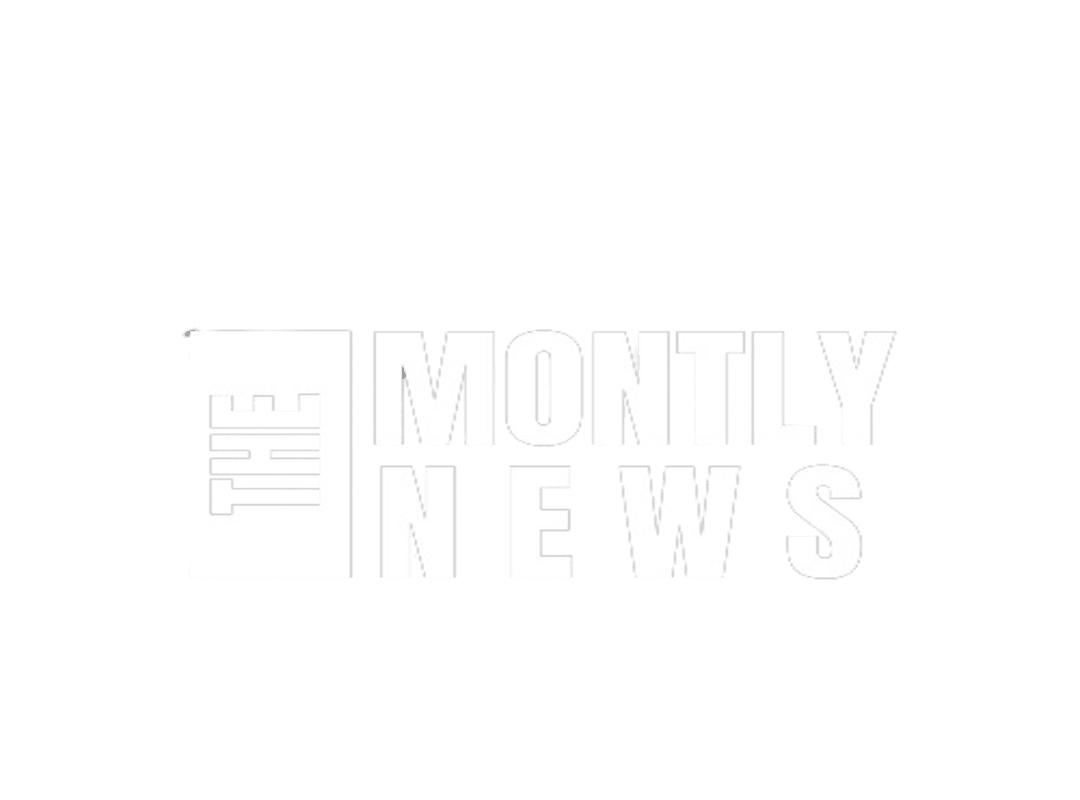Introduction
The US market is currently experiencing a significant period of anticipation and uncertainty, with the dollar hovering near an eight-week low. This situation has captured the keen attention of investors, who are closely monitoring any developments that could influence market dynamics. Central to this heightened interest is the upcoming release of the US payroll data, which is expected to provide critical insights into the health of the labor market and, by extension, the broader economy.
In recent weeks, the dollar’s performance has been under scrutiny as it continues to experience fluctuations. The currency’s value is a key indicator of economic stability and is influenced by a myriad of factors, including market sentiment, geopolitical events, and economic data releases. The approaching payroll data release is particularly significant because it could potentially sway the Federal Reserve’s monetary policy decisions. Investors are acutely aware that robust employment figures could bolster the case for maintaining or even increasing interest rates, while weaker data might prompt a more dovish stance from the Fed.
As the dollar hovers near its lowest point in eight weeks, market participants are weighing the potential implications of the payroll data on future economic policies. This data is not only a barometer of employment trends but also a crucial determinant of consumer spending and overall economic momentum. Therefore, its impact on investor sentiment and market movements cannot be overstated.
In this blog post, we will delve into the factors contributing to the dollar’s current position, examine the significance of the upcoming payroll data, and explore the potential scenarios that could unfold in the wake of its release. By understanding these dynamics, investors can better navigate the complexities of the US market and make informed decisions in a time of economic uncertainty.
Current State of the US Dollar
The US dollar has recently been hovering near an eight-week low, a trend that has garnered considerable attention in the financial markets. Several factors have contributed to this decline, making it a topic of significant interest among investors and analysts alike.
One of the primary reasons for the dollar’s current position is the release of recent economic data, which has painted a mixed picture of the US economy. For instance, inflation rates have shown signs of cooling, which, while generally positive for the long-term economic outlook, has led to speculations that the Federal Reserve might slow down its pace of interest rate hikes. Lower interest rates typically make the dollar less attractive to investors seeking higher returns, thereby exerting downward pressure on its value.
Market sentiment has also played a crucial role in the dollar’s recent performance. With growing concerns over a potential economic slowdown, investors have been reallocating their assets towards safer havens, such as gold and government bonds, at the expense of the dollar. This shift in investor behavior reflects a broader sense of caution as market participants await more definitive economic indicators.
Geopolitical events have further complicated the landscape for the dollar. Ongoing trade tensions and international diplomatic uncertainties have introduced additional volatility into the market. These factors have not only affected global confidence but have also contributed to fluctuations in the dollar’s value, as investors navigate an increasingly complex and unpredictable global environment.
The current valuation of the US dollar has significant implications for the broader US economy. A weaker dollar can make US exports more competitive on the global stage, potentially boosting domestic manufacturing and employment. However, it can also lead to higher import costs, contributing to inflationary pressures within the domestic market.
Overall, as investors continue to digest a myriad of economic indicators and geopolitical developments, the performance of the US dollar remains a key focal point. The intricate interplay of these factors will likely shape its trajectory in the coming weeks and months, making it essential for stakeholders to stay informed of the latest US market news.
The importance of US payroll data cannot be overstated, particularly for investors and economists who closely monitor the health of the labor market. This data serves as a vital indicator of economic vitality, revealing the number of jobs added or lost within a given period. Payroll data provides a comprehensive view of employment trends, wage growth, and workforce participation, offering insights into consumer spending patterns and overall economic growth.
For investors, the significance of payroll data is immense. A robust labor market typically signifies increased consumer confidence, leading to higher spending and investment levels. Conversely, weak payroll figures can signal economic distress, prompting cautious investor behavior. By analyzing payroll data, investors can gauge the economic landscape and adjust their strategies accordingly, making informed decisions about asset allocation and risk management.
Economists also rely heavily on payroll data to assess the broader economic environment. Employment statistics are a key component of numerous economic models and forecasts. Consistent job growth suggests a stable and expanding economy, whereas declining employment numbers may indicate underlying economic issues that could ripple through various sectors. Hence, payroll data serves as a foundational element in economic analysis and policy formulation.
Moreover, the Federal Reserve closely scrutinizes payroll data when making monetary policy decisions. Employment levels and wage growth are critical factors in determining the appropriate stance on interest rates. Strong payroll figures may prompt the Federal Reserve to raise interest rates to curb potential inflation, while weak data could lead to rate cuts to stimulate economic activity. Thus, payroll data directly influences the Federal Reserve’s approach to managing the economy.
In essence, US payroll data acts as a barometer for the country’s economic health. Its implications extend far beyond immediate employment statistics, shaping investor behavior, economic forecasts, and monetary policy. As such, the anticipation surrounding the release of payroll data is well-justified, reflecting its pivotal role in the financial and economic landscape.
Potential Impact on Federal Reserve Policy
As the US market news highlights, the dollar’s current position near an eight-week low has placed significant attention on the forthcoming payroll data. The Federal Reserve closely monitors such economic indicators to guide its monetary policy decisions. Anticipated scenarios based on the strength or weakness of the payroll data could lead to different policy responses, each with unique implications for the dollar and the broader economy.
In the event of robust payroll data, indicating strong job growth, the Federal Reserve might consider tightening monetary policy. This could involve raising interest rates sooner than anticipated to prevent the economy from overheating and to keep inflation in check. Higher interest rates generally attract foreign investors seeking better returns, which could boost the dollar’s value. A stronger dollar, however, might impact export competitiveness and corporate earnings, potentially leading to a nuanced market response.
Conversely, weak payroll data could signal economic vulnerabilities, prompting the Federal Reserve to adopt a more accommodative stance. This might involve maintaining or even lowering interest rates to stimulate economic activity. Such a policy response could result in a weaker dollar as lower rates typically diminish the currency’s appeal to investors. While a weaker dollar could enhance export growth by making American goods cheaper abroad, it may also contribute to inflationary pressures by increasing the cost of imported goods.
If the payroll data aligns with market expectations, the Federal Reserve might opt to maintain its current policy trajectory, balancing between supporting growth and controlling inflation. In this scenario, the dollar’s movement would largely depend on other concurrent economic indicators and global market dynamics. Investors will closely analyze the nuances of the Federal Reserve’s policy statements for any hints of future adjustments.
The forthcoming payroll data and its interpretation will undoubtedly play a pivotal role in shaping the Federal Reserve’s policy direction. Investors and market participants will be keenly observing the implications for interest rates, the economy, and the dollar, as these factors collectively influence market stability and investment strategies.
Market Reactions and Investor Sentiment
The US market has been experiencing a period of heightened anticipation as investors eagerly await the upcoming payroll data. This anticipation has led to noticeable shifts in market movements and trading volumes. As the dollar hovers near an eight-week low, investor sentiment has been marked by a cautious yet watchful stance. This period of uncertainty has had a significant impact on trading behaviors, with many investors opting for a wait-and-see approach.
Market sectors are showing varied reactions to the impending data release. For instance, the technology sector, often considered more volatile, has seen a slight pullback as investors move to secure their gains. On the other hand, defensive sectors such as utilities and healthcare have experienced a modest uptick in activity, as investors seek safer havens amidst the prevailing uncertainty. These movements are reflective of the broader market sentiment, which is currently characterized by a mix of caution and strategic positioning.
Trading volumes have also been affected, with a noticeable dip in activity as compared to previous weeks. This decline in volume can be attributed to the general hesitance among investors, who are waiting for clearer signals from the upcoming payroll data before making significant moves. The anticipation surrounding the data release is palpable, with many market participants keenly aware of the potential implications for future monetary policy and economic outlook.
Post-data release, the market is expected to experience a bout of short-term volatility. Should the payroll data exceed expectations, it could bolster investor confidence and lead to a resurgence in the dollar’s value. Conversely, if the data falls short, it may prompt a more defensive stance among investors, leading to further depreciation of the dollar. The interplay between investor sentiment and market reactions in the wake of the payroll data will be crucial in shaping the short-term market trajectory.
Expert Opinions and Predictions
The anticipation surrounding the upcoming payroll data has led to a plethora of expert opinions and predictions. Financial analysts and economists are closely monitoring the situation, offering a variety of perspectives on how the data release may influence the US market and the dollar’s performance.
John Smith, a senior economist at Global Finance Advisors, suggests that the payroll data will be a critical indicator of the US labor market’s strength. He notes, “Given the current economic conditions, a stronger-than-expected payroll report could bolster confidence among investors, potentially leading to a short-term boost in the dollar. Conversely, weaker data could exacerbate concerns about economic slowdown, prompting a flight to safer assets.”
Meanwhile, Mary Johnson, Chief Market Strategist at Equity Insights, points to the Federal Reserve’s monetary policy as a significant factor. “The Federal Reserve has been closely watching employment statistics to guide its decisions on interest rates,” she explains. “A robust payroll report might reinforce the Fed’s inclination towards tightening monetary policy, which could support the dollar. However, any signs of labor market weakness might lead to a more cautious approach, keeping the dollar under pressure.”
On the other hand, some experts like Robert Lee from Market Horizons anticipate a more nuanced impact. He argues, “While the payroll data will undoubtedly influence market sentiment, it’s crucial to consider other economic indicators, such as inflation rates and consumer confidence. These factors collectively shape investors’ outlook and, by extension, the dollar’s trajectory.”
Overall, the diversity of expert opinions underscores the complexity of predicting market movements based on payroll data alone. Investors are advised to stay informed and consider a broad range of indicators to navigate the evolving economic landscape effectively.
Understanding the historical context of payroll data releases and their impact on the dollar is crucial for investors. Historically, payroll data has served as a significant indicator of the U.S. economic health, influencing both investor sentiment and Federal Reserve policies. For instance, strong payroll data often signals robust economic growth, leading to a stronger dollar as investors gain confidence in the U.S. economy. Conversely, weak payroll data can trigger concerns about economic slowdown, causing the dollar to decline as investors seek safer assets.
In past instances where the market conditions mirrored the current scenario, the dollar’s reaction to payroll data has been telling. Take, for example, the aftermath of the 2008 financial crisis. During this period, payroll data releases were closely monitored as indicators of economic recovery. Positive data led to a stronger dollar and prompted the Federal Reserve to consider tightening monetary policies. On the other hand, disappointing payroll figures resulted in a weaker dollar and continued accommodative monetary policies to stimulate growth.
Another notable period was the early 2010s when the Federal Reserve adopted a data-dependent approach to its monetary policy. During this time, payroll data releases consistently influenced investor expectations about interest rate changes. Strong payroll numbers often led to speculation about rate hikes, strengthening the dollar. Conversely, weaker data tempered expectations, leading to a softer dollar. This pattern underscores the critical role payroll data plays in shaping both market sentiment and policy decisions.
By examining these historical precedents, investors can glean insights into potential outcomes based on the forthcoming payroll data. While past performance is not always indicative of future results, understanding these patterns can provide a framework for anticipating market reactions. As the dollar hovers near an eight-week low, investors await the next payroll data release with keen interest, aware of its potential to influence both the currency’s value and broader economic policies.
Conclusion and Future Outlook
In reviewing the current state of the US market news, it is evident that the dollar remains near an eight-week low as investors keenly await the forthcoming payroll data. This data is pivotal, not only for its immediate impact on market sentiment but also for its broader implications on the trajectory of the US economy.
The upcoming payroll report is anticipated to provide crucial insights into the health of the labor market, which is a key indicator for the Federal Reserve’s monetary policy decisions. A robust payroll figure may instill confidence among investors, potentially stabilizing the dollar and encouraging a more hawkish stance from the Fed. Conversely, weaker-than-expected data could exacerbate concerns over economic growth, leading to further depreciation of the dollar and possibly prompting a more dovish approach by the Fed.
In the short term, market participants will be closely monitoring the payroll data as a barometer for economic momentum. Additionally, other economic indicators and geopolitical developments will continue to influence investor sentiment and market dynamics. The interplay between these factors will shape the near-term outlook for the dollar and financial markets.
Looking ahead to the long-term horizon, the US economy faces a nuanced landscape. Structural factors such as technological advancements, demographic shifts, and evolving trade policies will play significant roles in shaping economic outcomes. Furthermore, the Federal Reserve’s ongoing efforts to balance inflation control with economic growth will remain a critical focal point for investors.
Ultimately, the future of the US dollar and broader financial markets will depend on a complex array of factors. As such, staying informed through reliable market news and data will be essential for investors navigating this ever-changing environment. The upcoming payroll data serves as a crucial piece of this puzzle, underscoring its significance in the broader economic narrative.







0 Comments